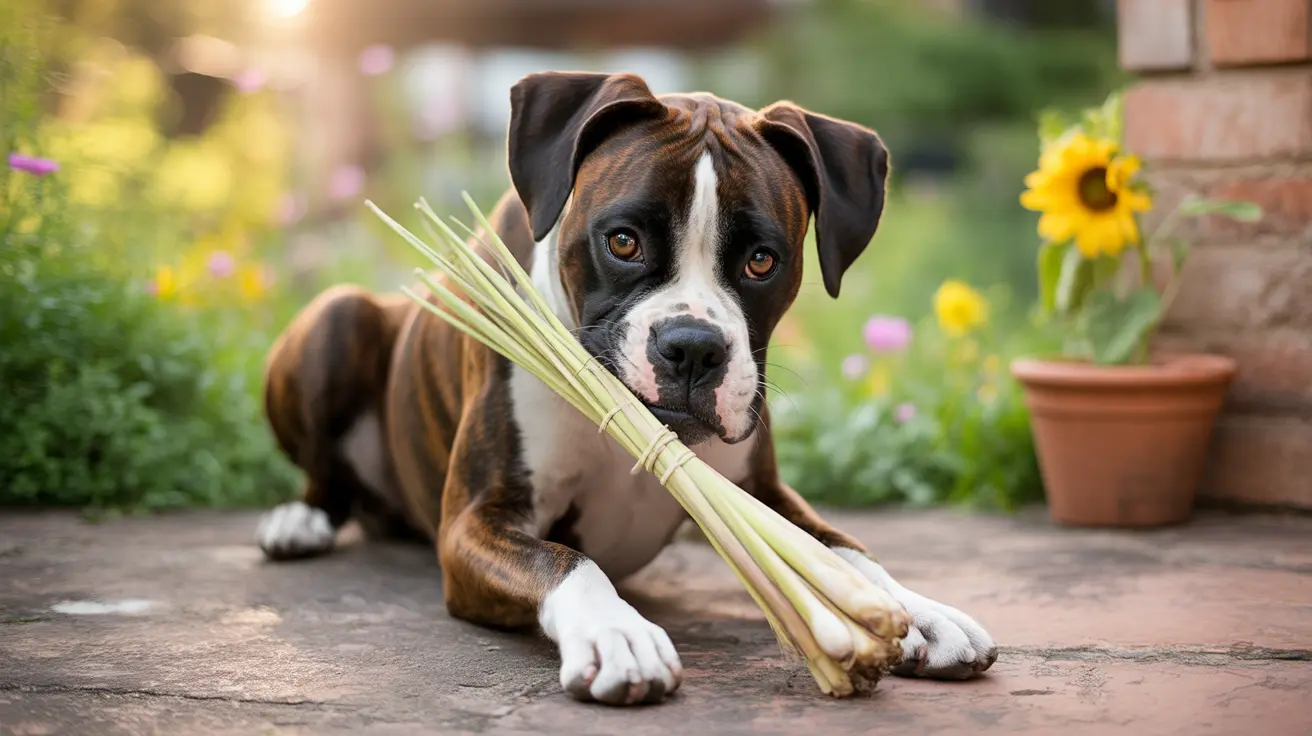If you're a dog owner who enjoys cooking with aromatic herbs or using essential oils, you might wonder about the safety of lemongrass around your furry friend. The short answer is no - dogs should not eat lemongrass, as it can be toxic to them and cause serious health issues.
In this comprehensive guide, we'll explore why lemongrass poses risks to dogs, what symptoms to watch for if your pet is exposed, and how to keep your four-legged companion safe around this popular herb.
Understanding Lemongrass and Its Risks to Dogs
Lemongrass contains compounds called cyanogenic glycosides that can be converted to cyanide in a dog's body. This fragrant herb, while beneficial for humans, can cause significant health problems in canines, ranging from mild digestive upset to severe poisoning.
The plant's sharp, fibrous structure also presents a physical danger, potentially causing gastrointestinal blockages if ingested.
Signs of Lemongrass Toxicity in Dogs
If your dog has consumed lemongrass, watch for these common symptoms:
- Vomiting and diarrhea
- Excessive drooling
- Abdominal pain and bloating
- Loss of appetite
- Lethargy
- Fever
In severe cases, dogs may experience:
- Difficulty breathing
- Rapid heart rate
- Cherry-red gums
- Signs of shock
- Collapse
The Dangers of Lemongrass Essential Oil
Lemongrass essential oil poses an even greater risk than the fresh plant. These concentrated oils can cause severe reactions in dogs, whether ingested, applied to the skin, or diffused into the air.
Even small amounts of essential oil can lead to serious poisoning symptoms, including neurological issues and respiratory distress. Never use lemongrass oil on or around your dog without veterinary guidance.
What to Do If Your Dog Eats Lemongrass
If you suspect your dog has consumed lemongrass or been exposed to its essential oil:
- Contact your veterinarian immediately
- Monitor your dog's symptoms closely
- Don't induce vomiting unless directed by a professional
- Bring any remaining plant material or product to the vet
- Be prepared for possible emergency treatment
Prevention and Safety Measures
To protect your dog from lemongrass exposure:
- Remove lemongrass plants from your garden
- Store culinary lemongrass securely
- Keep essential oils out of reach
- Dispose of kitchen scraps properly
- Inform household members about the risks
Frequently Asked Questions
Can dogs safely eat lemongrass, or is it toxic to them?
No, dogs cannot safely eat lemongrass. It is toxic to them due to compounds that can convert to cyanide in their bodies, and its fibrous nature can cause physical blockages.
What are the signs and symptoms of lemongrass poisoning in dogs?
Common symptoms include vomiting, diarrhea, drooling, abdominal pain, lethargy, and fever. Severe cases may show breathing difficulties, rapid heart rate, and collapse.
How dangerous is lemongrass essential oil for dogs compared to the plant itself?
Lemongrass essential oil is significantly more dangerous than the plant because it's highly concentrated. Even small amounts can cause severe poisoning symptoms and neurological issues.
What should I do if my dog has eaten lemongrass or been exposed to lemongrass oil?
Contact your veterinarian immediately, monitor your dog's symptoms, and don't induce vomiting unless directed by a professional. Bring any remaining material to aid in treatment.
How can I protect my dog from accidental lemongrass ingestion or exposure at home?
Remove lemongrass plants from accessible areas, store culinary lemongrass securely, keep essential oils out of reach, and properly dispose of kitchen scraps containing lemongrass.
Remember, when it comes to your dog's health, it's always better to err on the side of caution. If you're ever unsure about a substance's safety for your pet, consult with your veterinarian before allowing any exposure.






